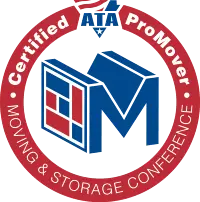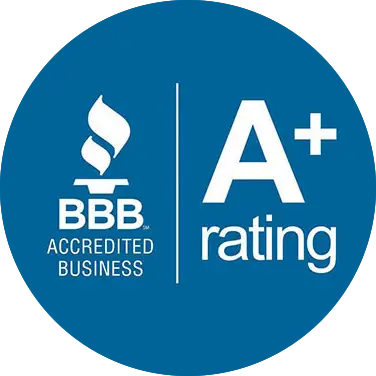Navigating Your Cross-Country Move: A Step-by-Step Guide from Bright Star Moving
Embarking on a cross-country move in the USA is a major life event that requires careful planning and execution. Whether you’re relocating for a new job, family reasons, or a fresh start, the distance involved—often spanning thousands of miles—adds layers of complexity compared to local moves. At Bright Star Moving, we’ve helped countless clients navigate these journeys smoothly, drawing on our expertise in long-distance relocations. This detailed step-by-step guide will walk you through the process, from initial planning to settling into your new home, ensuring you’re prepared for every stage. Follow these steps to minimize stress and maximize efficiency.

Step 1: Start Planning Early (2-3 Months Ahead)
The foundation of a successful cross-country move is thorough preparation. Begin at least 8-12 weeks in advance to allow time for research and decision-making.
- Research Your Destination: Investigate the new area’s cost of living, housing market, schools, and climate. Use online resources to compare cities and neighborhoods. Consider factors like job opportunities or proximity to family.
- Set a Timeline: Determine your ideal moving date, factoring in work schedules, school calendars, or lease endings. Account for potential delays due to weather or holidays.
- Assemble a Moving Binder or Digital Folder: Organize all documents, checklists, and contacts in one place. This includes quotes from movers, inventories, and travel itineraries.
- Notify Key Parties: Inform your employer, landlord, or real estate agent about your move. Start gathering recommendations for services in your new location.
Step 2: Create a Comprehensive Budget
Cross-country moves can be costly, so budgeting is crucial to avoid financial surprises.
- Estimate Costs: Factor in moving company fees, packing supplies, transportation (gas, flights, or shipping), temporary housing, and storage if needed. Don’t forget incidental expenses like meals during travel or pet boarding.
- Get Multiple Quotes: Contact several moving companies, including Bright Star Moving, for estimates. Compare services like full-service packing versus DIY options.
- Account for Hidden Fees: Include potential costs for insurance, tolls, or permits. Research tax deductions if your move is job-related.
- Build a Buffer: Add 10-20% to your budget for unexpected issues, such as vehicle repairs or extended hotel stays.
Step 3: Declutter and Inventory Your Belongings
Reducing what you move saves time, money, and effort.
- Sort and Purge: Go room by room, categorizing items into keep, sell, donate, or discard. Host a garage sale or use apps like Craigslist for selling.
- Create a Detailed Inventory: List all items, noting their condition and value. This is essential for insurance purposes and tracking during the move.
- Consider Shipping Options: For valuables or bulky items, explore specialized shipping services. At Bright Star Moving, we offer tailored solutions for fragile or oversized belongings.
- Measure Furniture: Ensure large pieces will fit in your new space by taking measurements and comparing floor plans.
Step 4: Choose Your Moving Method and Hire Professionals
Decide how you’ll transport your belongings based on your needs and budget.
- Evaluate Options: DIY with a rental truck, portable containers, or full-service movers. For cross-country, professional services like Bright Star Moving are often the most reliable.
- Research Movers: Check reviews, licenses (via FMCSA for interstate moves), and insurance coverage. Look for companies with experience in long-haul relocations.
- Book Early: Secure your mover 4-6 weeks in advance, especially during peak seasons (summer). Request an in-home estimate for accuracy.
- Understand Contracts: Review terms, including delivery windows, liability, and cancellation policies.
Step 5: Pack Strategically (4-6 Weeks Ahead)
Packing for a long-distance move requires durable materials and organization to protect items during transit.
- Gather Supplies: Stock up on boxes, bubble wrap, tape, and labels. Use wardrobe boxes for clothes and dish packs for kitchenware.
- Pack Room by Room: Start with non-essentials like seasonal items. Label boxes with contents, room destination, and fragility.
- Protect Fragiles: Wrap breakables individually and use padding. For electronics, keep original boxes if possible.
- Prepare an Essentials Kit: Pack a box or suitcase with immediate needs like toiletries, medications, and important documents for easy access upon arrival.
Step 6: Handle Legal and Administrative Tasks (2-4 Weeks Ahead)
Tie up loose ends to ensure a seamless transition.
- Update Your Address: Notify the USPS, banks, credit cards, and subscriptions. Use the official change-of-address form.
- Transfer Utilities and Services: Schedule disconnections at your old home and setups at the new one, including internet, electricity, and water.
- Vehicle and Pet Preparations: If driving, service your car and plan routes. For pets, update microchips and arrange vet records.
- Health and Education Records: Transfer medical records, prescriptions, and school transcripts.
Step 7: Prepare for the Journey
The travel aspect of a cross-country move can be an adventure or a challenge—plan accordingly.
- Driving Route: Map out stops, hotels, and attractions. Use apps like Google Maps for real-time updates.
- Flying or Shipping: If not driving, book flights and arrange for vehicle shipping. Coordinate with your mover for household goods.
- Family and Pet Considerations: Plan activities for kids and ensure pets have carriers, food, and comfort items.
- Emergency Kit: Pack roadside assistance tools, first aid, and snacks.
Step 8: Moving Day Execution
The big day requires coordination and calm.
- Final Walkthrough: Confirm all items are packed and nothing is left behind.
- Supervise Loading: Work with movers to ensure proper handling. Sign the inventory list.
- Clean Up: Leave your old home tidy, perhaps hiring cleaners.
- Stay in Touch: Keep communication open with your moving team for updates.
Step 9: Arrival and Unpacking
Upon reaching your destination, focus on quick setup.
- Inspect Deliveries: Check items against your inventory for damage. Note any issues immediately.
- Unpack Essentials First: Set up bedrooms, kitchen, and bathrooms to make the space livable.
- Organize Systematically: Unpack room by room, recycling packing materials as you go.
- Update Locally: Register vehicles, get a new driver’s license, and vote if applicable.
Step 10: Settle In and Adjust
The final phase is about making your new house a home.
- Explore the Area: Visit local stores, parks, and community centers.
- Build a Support Network: Join groups or apps for newcomers.
- Monitor Adjustments: Give yourself time to adapt; seek help if needed.
- Follow Up with Bright Star Moving: Provide feedback on your experience to help us improve.
By following this step-by-step guide, your cross-country move can be a positive experience. At Bright Star Moving, we’re dedicated to providing top-tier service tailored to your needs. Contact us today for a personalized quote and let our experts handle the details!







